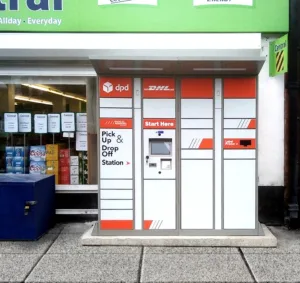As brands look to strike up more meaningful conversations with online buyers, Niraj Aswani CTO of Klevu discusses the importance of using the latest tech to make in-app and on-site interactions more human.
The majority of UK consumers (91%) are more likely to remain loyal to brands that they find trustworthy and authentic. That means ecommerce platforms need to raise the stakes with less hype and self-promotion and more empathy and personalisation.
To do this, digital retailers need to go beyond basic searches and keyword matching and instead connect shoppers and products by focusing on what really matters to each individual user.
In 2023, being able to nurture closer relationships and deliver more authentic responses will be crucial to build trust and nurture long-term loyalty for apps and webstores.
Keeping it real in a virtual world?
Authenticity is about building value, establishing community, and inspiring and entertaining users. For ecommerce marketers, being able to instigate meaningful conversations that users want to be part of, is the difference between an OK campaign and a truly great one.
But building authenticity at scale, when your audience also demands highly personalised interactions, is a tough challenge.
AI holds the key
The secret lies in harnessing the latest Artificial Intelligence (AI) innovations to automatically assimilate, analyse, process and respond to customer requests. But in a way that resonates with the user by delivering more ‘humanised’ and less robotic and generic interactions.
For instance, imagine having an AI chat-bot integrated within the search bar. Like a real-life sales assistant, it can talk back, asking questions that help fine tune results and make discovery less of a guessing game and more of a success for the shopper. This is something we’re going to see a lot more of in 2023, as ecommerce brands look to drive tangible value and competitive advantage from this game changing new tech.
But it’s only one part of the story. Here are six of the most powerful AI assets in the retailers’ artillery as they fight to build trust, traction and conversion in an increasingly digital and ‘noisy’ retail world.
Natural Language Processing (NLP)
NLP enables websites and apps to break down and interpret human language, so they can understand customers better. It helps programs solve problems and determine the most appropriate action, making it perfect for chatbots, search tools or request forms. With NLP, brands can build more accurate customer profiles, track changing behaviours, and ensure the right content, product or response to customer requests.
Natural Language Generation (NLG)
If NLP’s role is to process and read language, NLG’s role is to create it. It can transform structured data into more natural, meaningful and easy to digest phrases, sentences and content. This reduces the burden for marketing teams, for instance by enabling chatbots to generate personalised customer follow-up emails. And it’s not just words – NLG can be applied to numbers, charts and images so can be used to build complex content like more accurate product descriptions and instructions.
Voice and Visual Search
An exciting new way to drive visibility and traffic, these advanced search tools use images and voice input to source, filter and display related content. Users can search using images captured on their phones, from sites like Pinterest, or through voice platforms like Siri and Alexa. Making discovery more intuitive, engaging and fun, it’s the next step in digital marketing.
Personalisation and Sentiment Analysis
Also known as opinion mining, this shines a spotlight on customers’ attitudes, opinions and emotions and what they like and dislike about retailers, products, and brands. Used in tandem with personalisation, it can customise all types of customer interactions to ensure higher engagement and more positive outcomes.
Conversational AI
This allows two-way communication with a computer program in a way that’s both natural sounding and meaningful. When used to power search bars and chatbots, it gives users the impression they are communicating with a person, not a machine, so they feel properly heard and understood. Another standout feature is its ability to learn from every click, search entry and interaction so its capability is constantly evolving. It can also harness third-party data, intent and context analysis to respond to customer requests more intelligently, intuitively and accurately.
Predictive Analytics
Predictive analytics uses historic data to predict future trends, for instance analysing a buyer’s browsing and buying history to make an educated guess on what they’ll buy next. It also helps brands anticipate changes in customer behaviour much sooner so they can proactively tailor their messages in anticipation. They can curate marketing tools, messaging and product recommendations to inspire customer action and keep one step ahead of the competition.
How does all this tech help authenticity?
According to Adobe’s Trust Report, 71% of consumers expect brands to demonstrate trust through empathy, so it’s never been more important for brands to listen. Technology that provides deeper insight into the customer, what they want and what’s important to them is central to this.
The best, also make interactions two way, allowing retailers to pre-empt their buyers and respond with greater transparency, relevance and consistency and fuelling the trust that will keep them coming back for more.
At the end of the day, authentic ecommerce engagement is about creating interactions that are rooted in reality – and that means the customers’ reality not just the merchants.







